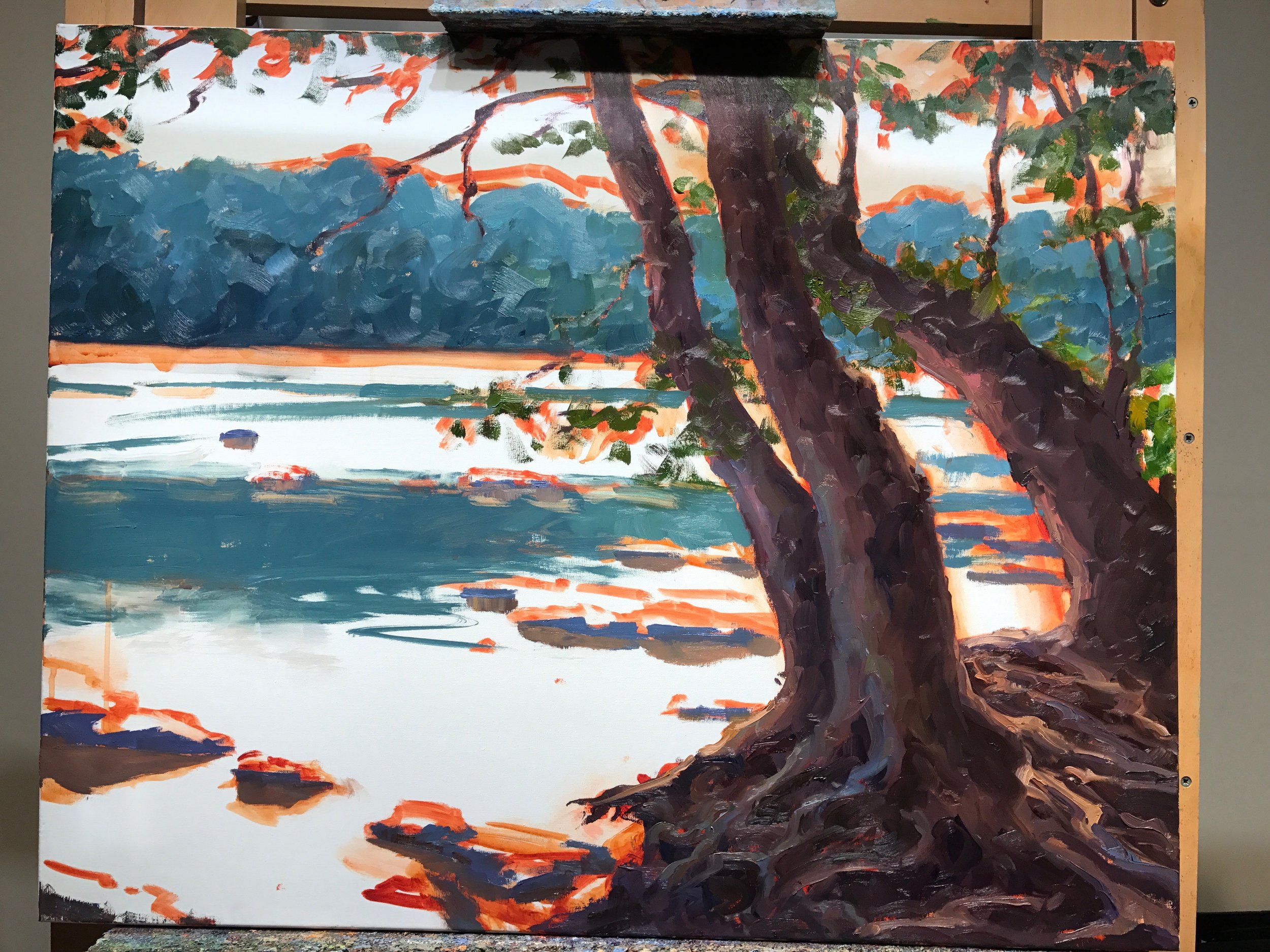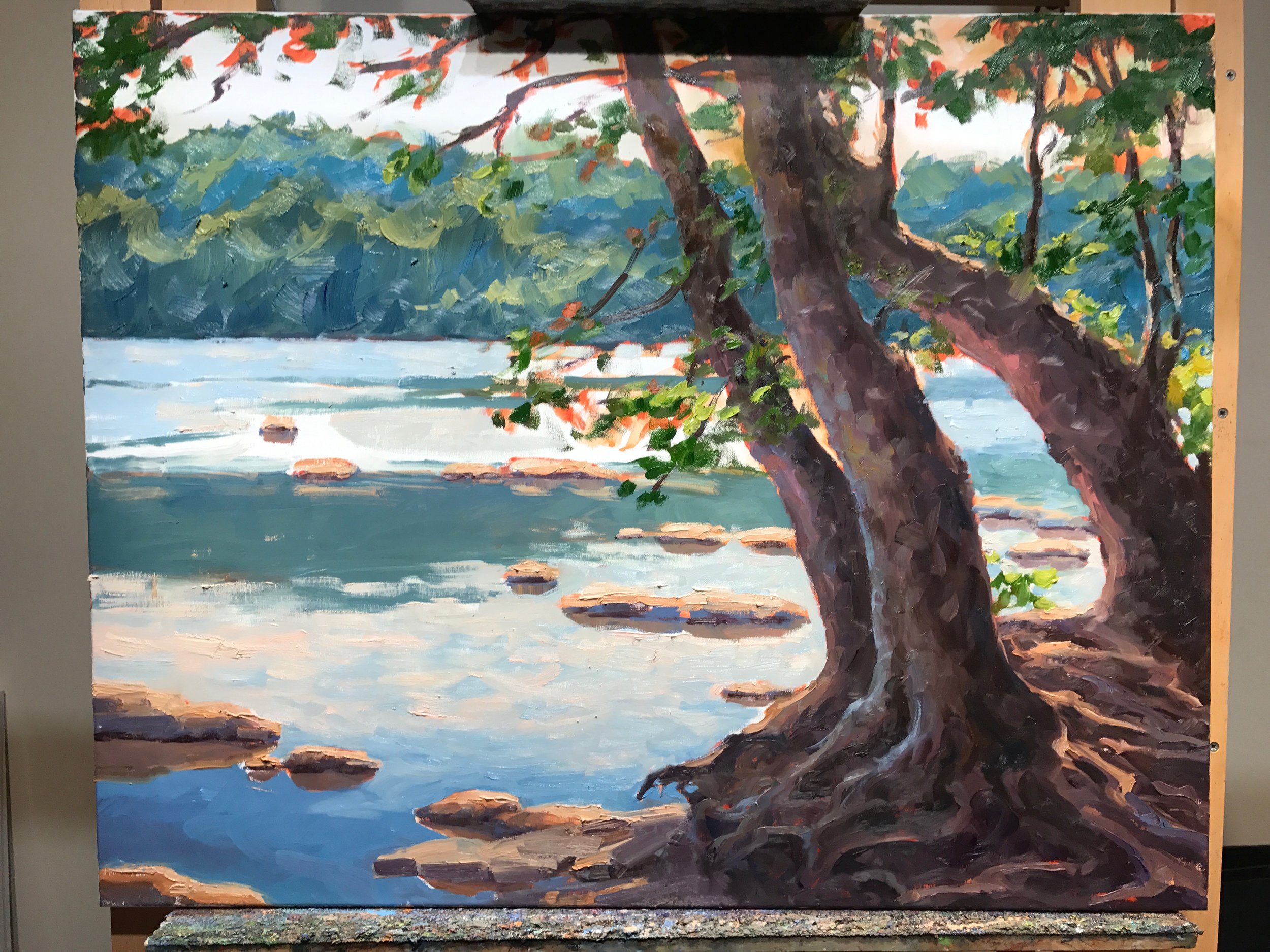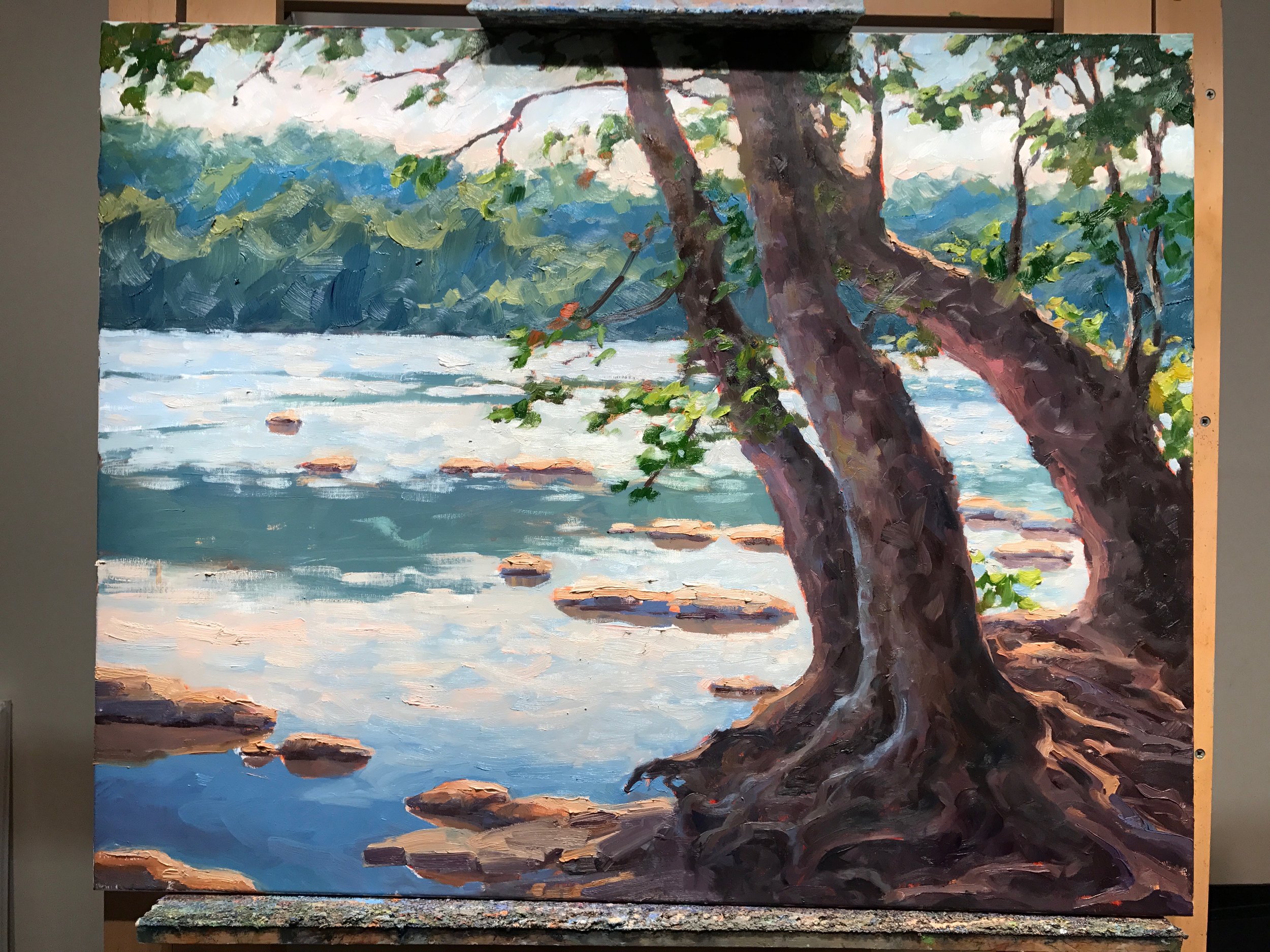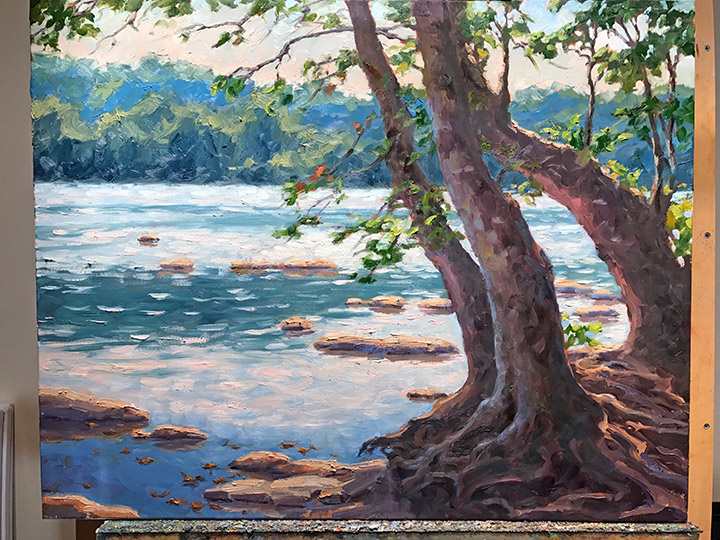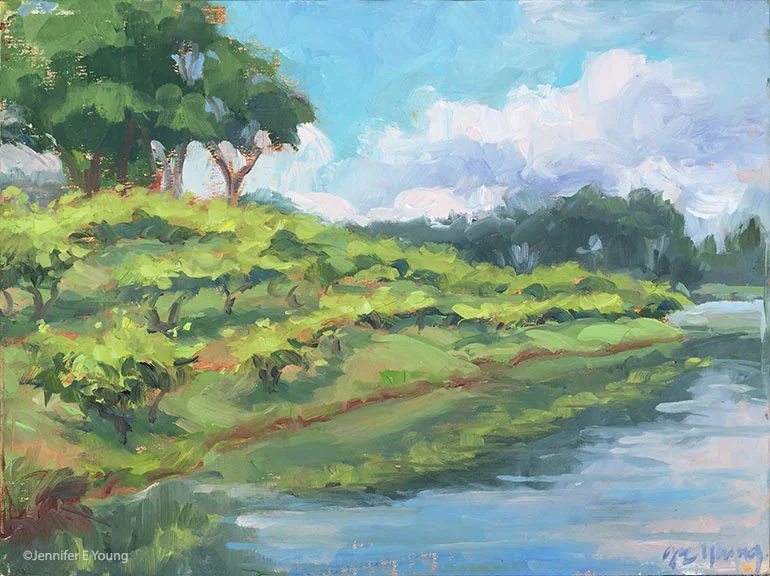Change is Good (on revising oil paintings)
/“I’m not afraid of anything in this world
There’s nothing you can throw at me
That I haven’t already heard
I’m just trying to find a decent melody
A song that I can sing in my own company”
I've heard it said that there's nothing new under the sun, and that's probably true when it comes to painting. Nevertheless, I never stop striving to improve, both in terms of technique and in how best to express myself. I want to make work that speaks to me and hopefully speaks to others as well. No one painting can say everything and I don't expect it to. The best paintings say just enough, with sensitivity, but without overstating.
And then there are the ones that need re-stating. :-/ Often with such paintings it is easier to just wipe down or tear up my first effort and see if I can try again on a fresh canvas. Sometimes though, it seems worth the effort to attempt a revision first before scrapping the whole darn thing. If the painting is fresh and new, reworking is a fairly easy and straightforward task, as there isn't an under-layer of built up paint to compete with.
But it may not occur to me right away exactly what change is needed, and it's only after sitting with it a while that I want to go back into it again. In these cases, a little bit of elbow grease is required, both to ensure proper adhesion of the new paint layers and to knock down any unwanted texture.
My painting, "Rugosa Coastline" is a studio piece that was based on a smaller plein air piece I did when I was up in Maine. After a few months of thinking about it I decided that it lacked something that the plein air piece captured. I felt the studio piece was labored, overall too busy, and the colors, especially in the foreground greenery, too intense for the time of day. So I set to work to see if I could make a few changes, to maybe loosen it up, and tone down the colors to ones more faithful to the time of day I was trying to capture.
First pass of my 24x30" studio painting based on the smaller plein air piece below.
My first order of business was to knock back some of the texture. Not all texture in the under layer is bad, but if there is a lot of texture that shows through as a "ghost" image I will sand it down a bit. If it's really built up I may find I need scrape it away razor blade, very carefully, (and pray I don't poke a hole in the canvas).
Next I will "oil out" to give the new paint layer better adhesion to the partially dried layer underneath. To oil out, solvents or medium (or a combination) is brushed in a thin layer on the surface of the portion of canvas you want to rework. Most often I just use a little Gamsol for this purpose.
"Rugosa Coastline" (SOLD) Oil on linen, 24x30" ©Jennifer E Young
The resulting painting was still a bit different than the little plein air piece, but it felt truer to the time and place and to the feelings that I had when creating the painting on the spot. I felt significantly happier with the revised version of this painting, and wouldn't you know, someone else did too? It sold not long after the revision.
Tune in to part two in my next post, where I'll share another revision I undertook, which ended up with more extensive and fairly dramatic changes.







